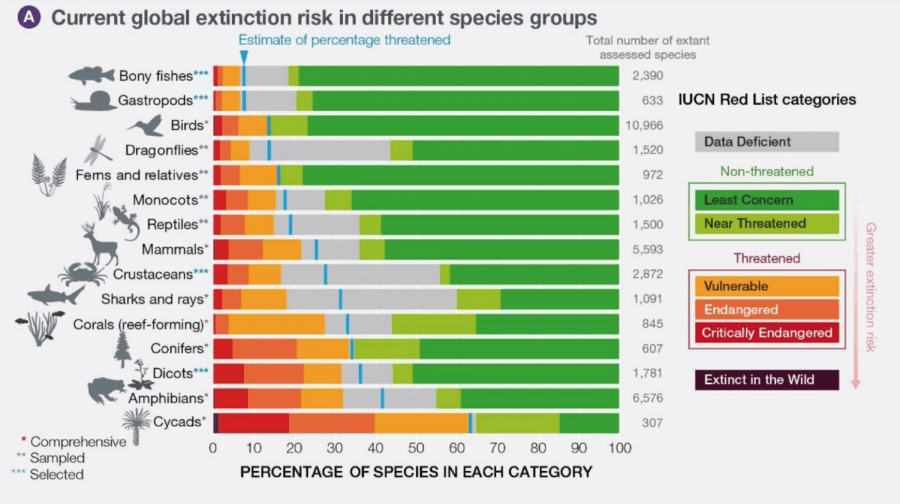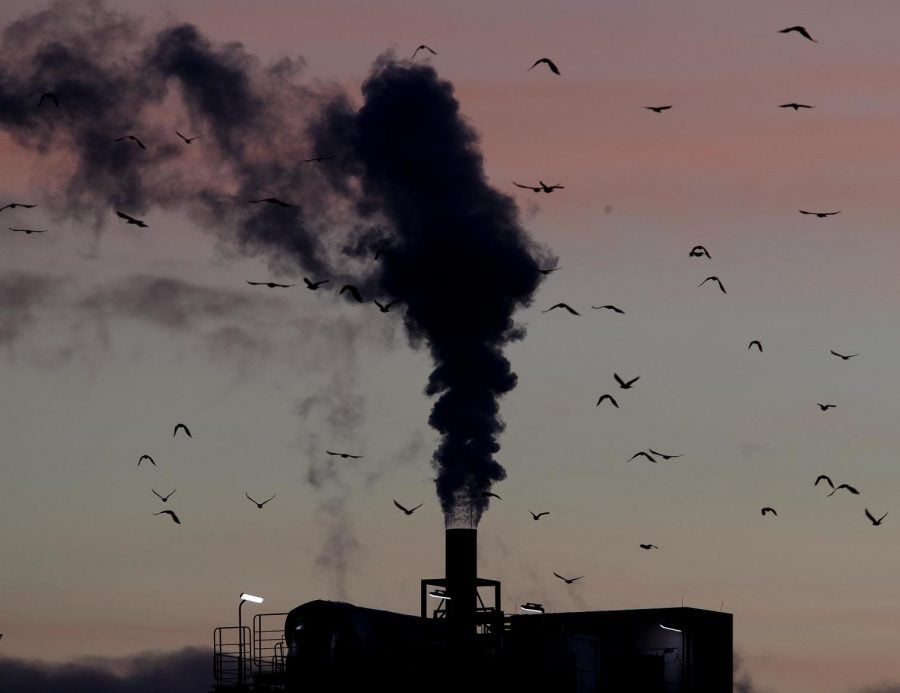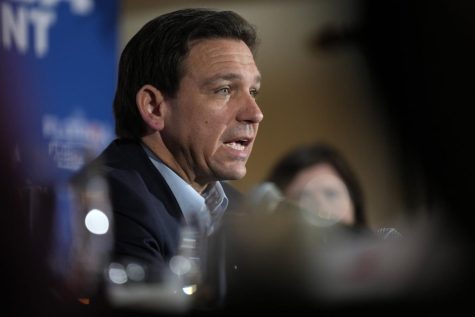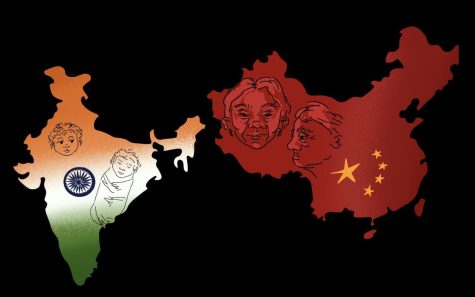UN report warns of dire future for nature
Credit: Michael Probst / Associated Press/The DePaulia
In this Dec. 4, 2018, file photo, birds fly past a smoking chimney in Ludwigshafen, Germany. Development that s led to loss of habitat, climate change, overfishing, pollution and invasive species is causing a biodiversity crisis, scientists say in a new United Nations science report released May 6, 2019.
The United Nations released a grim summary of an upcoming 1,500-page report about declining biodiversity on the planet Monday, May 6, finding that human activity has put more than 1 million species at risk of extinction and calling for “transformative change” to prevent further losses.
“Biodiversity” may sound like a jargony scientific term, but the fact is that human economies, lifestyles and livelihoods themselves depend on nature functioning as an interdependent system. When just a single species is lost, it can have a cascading effect on the rest of an ecosystem.
“The way the UN in particular has been thinking about it — and the profession of conservation biology has been assessing biodiversity loss — is not only to think about it in terms of the fate of these species, but to underscore the relationship between the fate of these species in a way that delivers goods and services to humans,” said Liam Heneghan, a professor of environmental science at DePaul.
The report names a number of factors as contributors to the impending loss of biodiversity. Many are familiar, like the effects of global warming. Others are related to unchecked human activity.
Rising use of land for agriculture and the global doubling of urban area “have had the largest negative impact on nature since 1970,” according to the summary.
And when coupled with other factors, like a growing human population and globalization that exacerbates pollution and introduces invasive species, a perfect storm is created for a mass extinction event.
The report also takes a broad look at the human economy and the direct line between free market capitalism and the exploitation of the environment.
“Economic incentives generally have favoured expanding economic activity, and often environmental harm, over conservation or restoration,” the report says.
A famous example of the ripple effect a single species can have on an ecosystem is the reintroduction of wolves to Yellowstone National Park. The wolf population in the park had been decimated by ranchers who deemed them pests to their cattle.
When scientists reintroduced them in 1995, the unchecked elk population, which fed on willow trees and was the wolves’ primary prey, was culled; the willow population subsequently rebounded.

Graphic excerpted from: “Summary for policymakers of the global assessment report on biodiversity and ecosystem services”
The rejuvenation of the willows allowed beavers, then a fledgling population in the park, to make use of the willows for dams. The dams changed the hydrological tendencies of the park’s streams, allowing waning species of fish and flowers to thrive.
Similarly, scientists warn the loss of 1 million irreplaceable species will have a profound ripple effect on the global ecosystem.
“Could we have guessed prior that reintroducing [wolves to Yellowstone] would give life to so many other species?” said Kieran Andreoni, an environmental science student at University of Illinois. “Not likely. Do we really know how the loss of 1 million species, or even just one more species will affect us? It is likely that any importance we attribute to these at-risk species is a gross underestimation.”
No species group will be immune to the mass extinction, and no part of the Earth, from the poles to the deep sea, will be untouched. But the group that will be hit the hardest are cycads, a family of tropical plants. The report estimates that a little more than 60 percent of cycads are threatened.
About 41 percent of amphibian species, 35 percent of conifers and 31 percent of mammal species are also at risk of extinction.
“We’re on the threshold of a real crisis, a crisis that may undermine our expectations that we can expect sustained delivery of the things we depend upon,” Heneghan said.
While the report was widely circulated in environmental circles, it was barely covered by the major broadcast and cable networks, according to a report by progressive advocacy group Media Matters. Only three of the 26 primetime broadcast network news shows reported on the summary report May 6, the day it was released.
The UN report states that, given the current trajectory of biodiversity loss, a policy of “transformative change” must be implemented.
Transformative change, as outlined in the summary, would require humans to think about every policy, business and personal decision in the context of how it affects the environment and how any negative effects can be mitigated.
“Am I optimistic we’re going to do very much about it? Honestly, not in my lifetime,” Heneghan said. “I’m not that confident anymore.”







